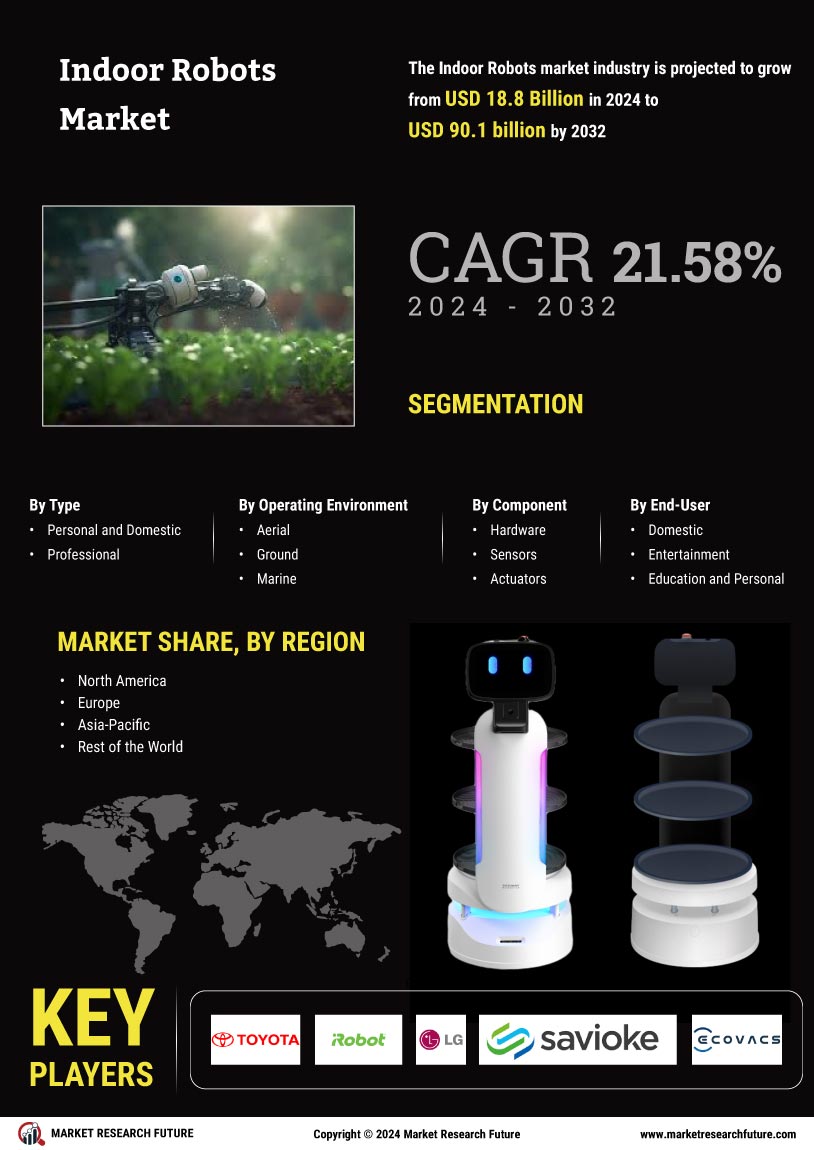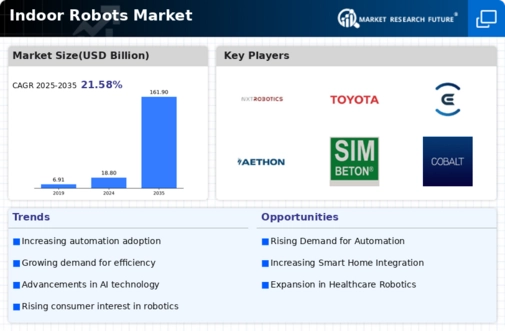Due to a competitive environment caused by a limited number of Leading market players and many medium- or small-scale businesses internationally, major market players are spending extensively within their competitive landscape. OEMs compete on market developments such as product availability, pricing, quality, and technical advancements, as well as on significant market changes, including new product introductions, contractual commitments, escalating investments, and cooperation. Competitors in the Indoor Robots industry are expanding their mergers and acquisitions to boost their market share.
Market leaders in the Indoor Robots industry are attempting to lower operational costs by upgrading their supply chains. The Indoor Robots industry has recently received various equipment from the industry. Major players in the Indoor Robots market include NXT Robotics, Toyota, iROBOT, LG Electronics, Savioke, Ecovacs, and ASUSTeK Computer Inc.
China's Ecovacs Robotics is a leader in technology. It is primarily recognized for creating robotic appliances for the home. The business is based in Suzhou, China, and was started by Qian Dongqi in 1998. Asia claims that by 2013, Ecovacs Robotics had more than 60% of the Chinese robot market. Ecovacs Robotics grew its business between 2012 and 2014 by opening US, Germany, and Japanese offices. The business also debuted mobile security and entertainment items, air purification, and window washing.
To create limited edition themed Deebots to coincide with the debut of Captain America: Civil War, Ecovacs Robotics teamed up with Marvel Entertainment.
Koo In-hwoi created the international company LG Corporation, which Koo In-hwoi's family now runs through subsequent generations. It ranks as South Korea's fourth-largest chaebol. Its headquarters are in Seoul's Yeouido-dong, Yeongdeungpo District, and LG Twin Towers skyscraper. In addition to operating businesses including LG Electronics, Zenith, LG Display, LG Uplus, LG Innotek, LG Chem, and LG Energy Solution in more than 80 nations, LG also produces electronics, chemicals, and telecommunications goods. GoldStar made the first radio in South Korea. While certain other domestic goods were offered under the Lucky brand name, many consumer electronics were sold under the GoldStar brand.
Although the Lucky brand was well-known for hygiene items such as soaps and HiTi laundry detergents, its most well-known products were Lucky and Perioe toothpaste. Some of these goods, including laundry detergent, are still produced by LG for the South Korean market.




















Leave a Comment